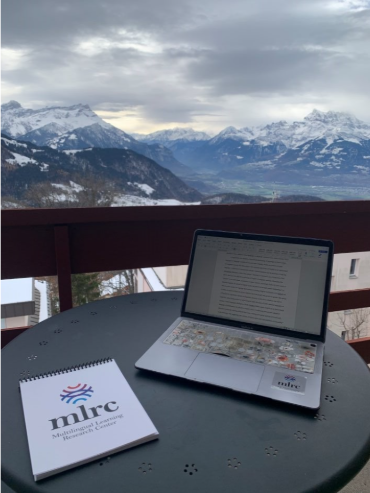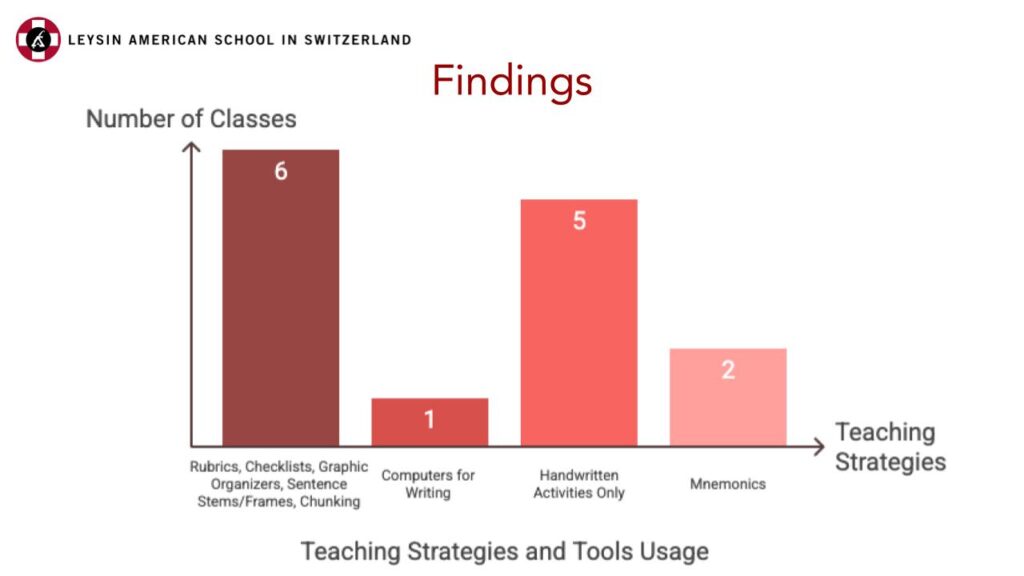Mari McCarville, Paul Magnuson, and Aaron Deupree
Leysin American School (LAS) is an international boarding school in French-speaking Switzerland. The school has 300 students in grades 7 through 12 who come from approximately 50 countries and speak a few dozen different languages. Students complete the LAS Diploma, which may include some Advanced Placement (AP) courses, courses in the International Baccalaureate (IB) Diploma Program, or the full IB Diploma. The language of instruction at LAS is English, but about two-thirds of students are multilingual and speak another language at home. In a given year, about 20-30% of students are in the English Language Acquisition (ELA) program, which includes English language courses as well as sheltered content courses. Across all courses, LAS strives to help students become innovative, compassionate, and responsible citizens of the world.
In 2013, LASER (LAS Educational Research) launched to promote action research as professional development. Over the years, LASER has supported professional development, accreditation, student teachers, and collaborations with various organizations and universities. Two long term programs are Visiting Scholars (colleagues not employed at LAS who spent one to two weeks on campus) and Resident Scholars (LAS faculty working on passion projects). Esther Bettney Heidt, MLRC School Network Researcher, visited LAS as a Visiting Scholar in 2023, and in 2024, LAS joined the MLRC, as an extension of their ongoing commitment to educational research.

MLRC @ Leysin American School
LASER Director, Paul Magnuson, is honored to collaborate as an MLRC Action Research Coach, especially after experiencing the MLRC Research Symposium in Rome. For him, the MLRC model is another example of something he has been very interested in for quite some time, namely, action research as professional development, led by teachers themselves. Paul is a believer in supporting teachers as they reflect on their teaching and share what they are learning with their colleagues.
Also inspired by the MLRC Research Symposium, LAS English Language Acquisition (ELA) teacher Mari McCarville launched an action research project to investigate effective ways to support neurodiverse multilingual learners with academic writing. At the beginning of the school year, she had noticed that many of her students in the ELA program also had an Individualized Learning Plan and were receiving learning support services. These neurodiverse multilingual learners were struggling with their academic writing tasks in Mari’s class, so she began her research by asking: According to existing research, what strategies best support academic writing for neurodiverse multilingual learners? She reviewed ten studies about teaching academic writing to neurodiverse and/or multilingual learners, and she compiled the findings into a list of 40 instructional and learning strategies. Then she asked: What writing strategies do LAS teachers already use with 7-12th grade neurodiverse multilingual learners? To answer this question, Mari created an observation protocol with the 40 strategies and observed six classes while students were engaged in writing tasks.

Across the classes observed, teachers communicated clear expectations for writing outcomes through rubrics and checklists. Additionally, in all six classes, teachers parsed large writing tasks into smaller parts (i.e. chunking) and supported student writing through graphic organizers, mnemonics, and sentence stems/frames. Interestingly, no neurodiverse multilingual learners used learning strategies unless they were specifically prompted to do so, whereas all neurotypical multilingual learners exhibited self-regulatory behaviors and problem-solving strategies without prompting.
These patterns across classes indicate the need for further research:
- To what extent are the most commonly-used instructional strategies supporting neurodiverse multilingual learners with their academic writing?
- Which of the 34 instructional strategies that were not observed could be most effective in supporting neurodiverse multilingual learners?
- How can teachers encourage neurodiverse multilingual learners to use learning strategies independently?
To see the full report of Mari’s action research, please login to the MLRC Hub. In the upcoming academic year, Mari will continue this work as a LASER Resident Scholar. She will join 12 other LAS faculty members who have all proposed year long projects to better understand their own teaching and their students’ learning.
The MLRC School Network is proud to partner with Leysin American School and to support educators as they engage in action research.


